These days, it seems there’s nothing you can’t do with bamboo. Surely you’ve heard about bamboo flooring. If you’ve ever visited an eco-boutique like Bambu Batu, then you know about bamboo clothing, bamboo sheets, and bamboo towels. You’ve probably heard about things like bamboo bicycles, jewelry, and toothbrushes, as well. Then there are the more obscure items like bamboo charcoal and bamboo flour.
One of the oldest uses for bamboo is actually as a food staple. The fresh shoots of many bamboo species are surprisingly tasty and nutritious. Bamboo grows quickly and it’s easy to prepare. The shoots add great texture to a meal, as well as flavor, vitamins, and minerals.
NOTE: This article first appeared in December 2019, most recently updated in April 2024.
Can you eat bamboo?
So if you can wear bamboo, and sleep on it, and brush your teeth with it, and build a house from it, you sort of have to wonder: can I eat it too? Not surprisingly, the answer is emphatically yes.
The practice of eating bamboo goes back many, many centuries. It’s difficult to say for certain, but people in Asia have probably been eating bamboo as long as they have been eating rice. Some sources suggest that the cultivation of bamboo as a food source dates back some 7,000 years.
You might wonder how people could eat such a woody plant, prized for its hardness, used in flooring and cutting boards. In fact, when the fresh culms (or shoots) sprout up at the beginning of the growing season, usually spring or early summer, they are actually quite soft and tender.
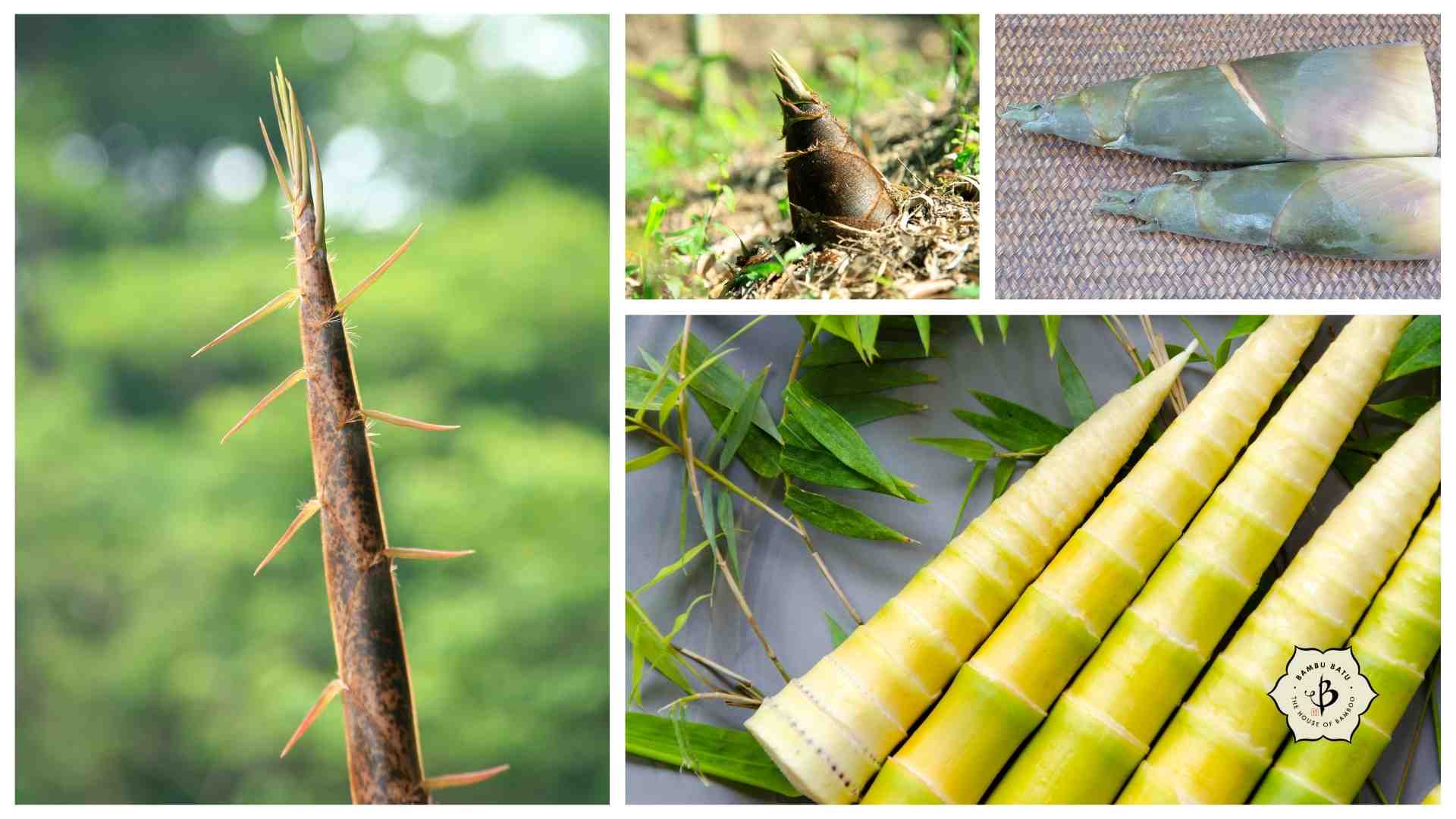
The important thing to know is that raw bamboo contains natural toxins (glycosides). Therefore, the shoots must be cooked or fermented before they can be consumed by humans. So when we say to eat it fresh (which is usually best), that does not mean uncooked, it just means not dried, canned or fermented.
What are the best varieties of edible bamboo?
Among the 1400+ species of bamboo, most of them have edible shoots. But there are just a handful of varieties that the connoisseurs consider most delicious for eating. So, if you’d like to harvest your own bamboo garden and throw together a bamboo salad, then consider growing one of the following strains.
| Botanical name | Common name | Description |
| Bambusa oldhamii | Oldham’s | Very popular clumping variety. Grows up 60′ tall and 4″ in diameter. |
| Dendrocalamus asper | Asper, sweet bamboo | Tropical timber species, grown widely for their superior quality poles. |
| Phyllostachys aureosulcata | Yellow groove bamboo | Ornamental variety with a yellow stripe. Grows up to 40′ tall and 2″ in diameter. |
| Phyllostachys bambusoides | Japanese timber bamboo | Dark green and very fast-growing timber bamboo. Excellent for construction and furniture making. |
| Phyllostachys dulcis | Sweet bamboo | Running bamboo cultivated for its sweet shoots. |
| Phyllostachys edulis | Moso bamboo | Running variety of timber bamboo. Widely grown for commercial uses. |
| Phyllostachys nigra ‘Henon’ | Giant gray | A cultivar (subspecies) of Black bamboo, with beautiful bluish-gray canes. Grows up to 60′ tall. |
| Phyllostachys nuda | Nuda | Very dark green runner. Grows up 30′ tall and 2″ thick, with delicious shoots. |

- Bambusa beecheyana: Not commonly found outside of Southeast Asia, this subtropical bamboo produces enormous shoots that are among the best-tasting. For this reason, many farmers in Laos and Thailand cultivate this species as a commercial crop.
- Bambusa oldhamii: Here’s a variety that might even be growing in your garden. Oldhamii is a giant timber bamboo, and the most widely grown strain in the U.S. Its shoots are highly valued and known to be tender, fragrant and delicious. If your grove is fully grown and healthy enough, you might try harvesting some fresh shoots. Just remember to boil them before eating. If you buy canned bamboo shoots from the store, they are likely to be this variety.
- Dendrocalamus asper: One of the most important species of bamboo for building and construction, asper is native to Indonesia and Southeast Asia. Towering culms often reach 60 to 80 feet in height, with a 5 to 6-inch diameter. Farmers throughout the world, in Africa, South America and Florida, now cultivate this species for both its tasty shoots and its superior canes.
- Phyllostachys aureosulcata: Widely grown as an ornamental, this species, known as Yellow groove bamboo, has a distinctive yellow stripe that runs along the culm grooves. Poles can grow up to 30-40 feet tall and 1.5-2 inches in diameter. The fresh shoots are quite tasty, without the bitter flavor, and can even be eaten raw.
- Phyllostachys bambusoides: a large timber bamboo from Japan whose shoots are eaten either fresh or dried. Madake, as it’s also called, can grow more than 50 feet tall and 4 inches in diameter.
- Phyllostachys dulcis: The name says it all, sweet bamboo. This medium-sized running bamboo is ideal for eating.
- Phyllostachys edulis: Also called Moso Bamboo, this giant timber variety is indigenous to China and Taiwan, and is also the most widely used for bamboo flooring and textiles. Mature stalks can grow nearly 100 feet tall and get to be several inches in diameter. Fresh shoots from a well-established grove can weigh more than 5 pounds; that’s quite a meal. Depending on what time of year it’s harvested, it may be dried or eaten fresh.
Keep in mind, not every species of bamboo is considered edible. Some varieties have a bitter and unpleasant flavor. Guadua angustifolia, for example, is an extremely important bamboo species in Central and South America, but the shoots are not to be eaten.
Also, check out our related article on 9 Bamboo species to grow for food.
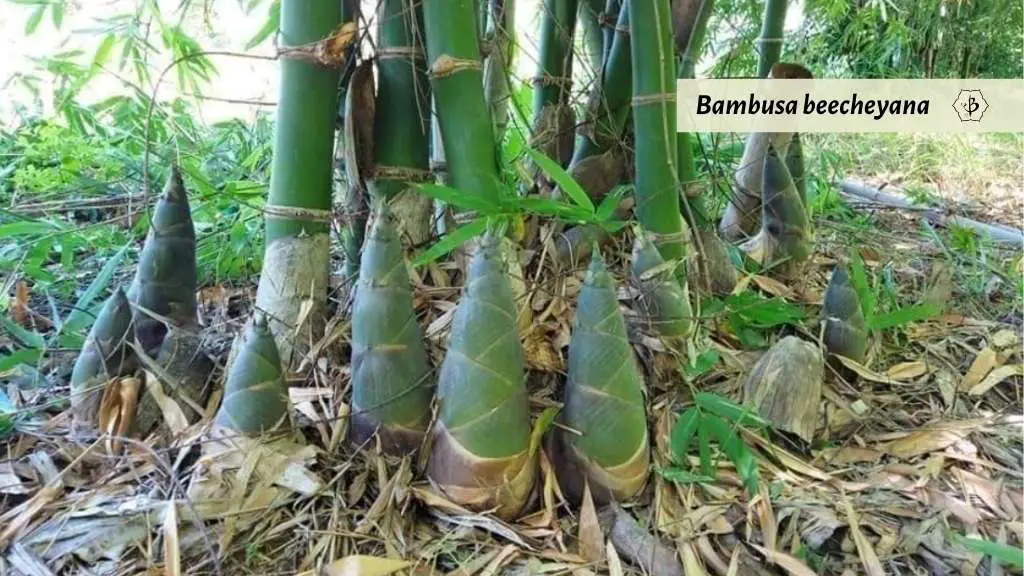
Harvest and preparation of bamboo shoots
If you plan to harvest shoots from your own bamboo plants, do it early in the growing season when the fresh culms are just beginning to emerge. Supposedly, the new culms that are still completely underground will taste the best. When you see the first new shoots of the growing season, grab a spade a start digging. The fresh growth is soft and easily removed with a good knife or a small saw.
In order to remove the natural toxins, it’s essential to cook or ferment the shoots. Begin by slicing them lengthwise in narrow strips, or else sideways into thin rings, roughly 1/2 to 1-inch thick, depending on their girth. Then you can boil them for about half an hour, change the water, and boil them again. Alternatively, you can ferment them in brine as you would with cabbage to make sauerkraut. (But without chopping them so finely.) Allow at least 10 to 14 days for the process to run its course.
After the shoots have been boiled, you can prepare them in just about anyway you please. A simple sautee with oil and spices, and throw them into a salad. Or add them to a soup or a stir-fry dish. Since they’ve been boiled, you won’t need to cook them long. Be careful of overcooking, because you don’t want to lose that great texture.
Naturally, it’s a different story for the bamboo-loving panda bears. Their massive and specialized jaws, teeth and stomachs allow them to eat their bamboo mature (i.e. hard and woody). For obvious reasons, we do NOT recommend trying this at home! You’ll find the young shoots to be far more tender and palatable. The pandas, of course, have no need to cook or ferment their bamboo either.
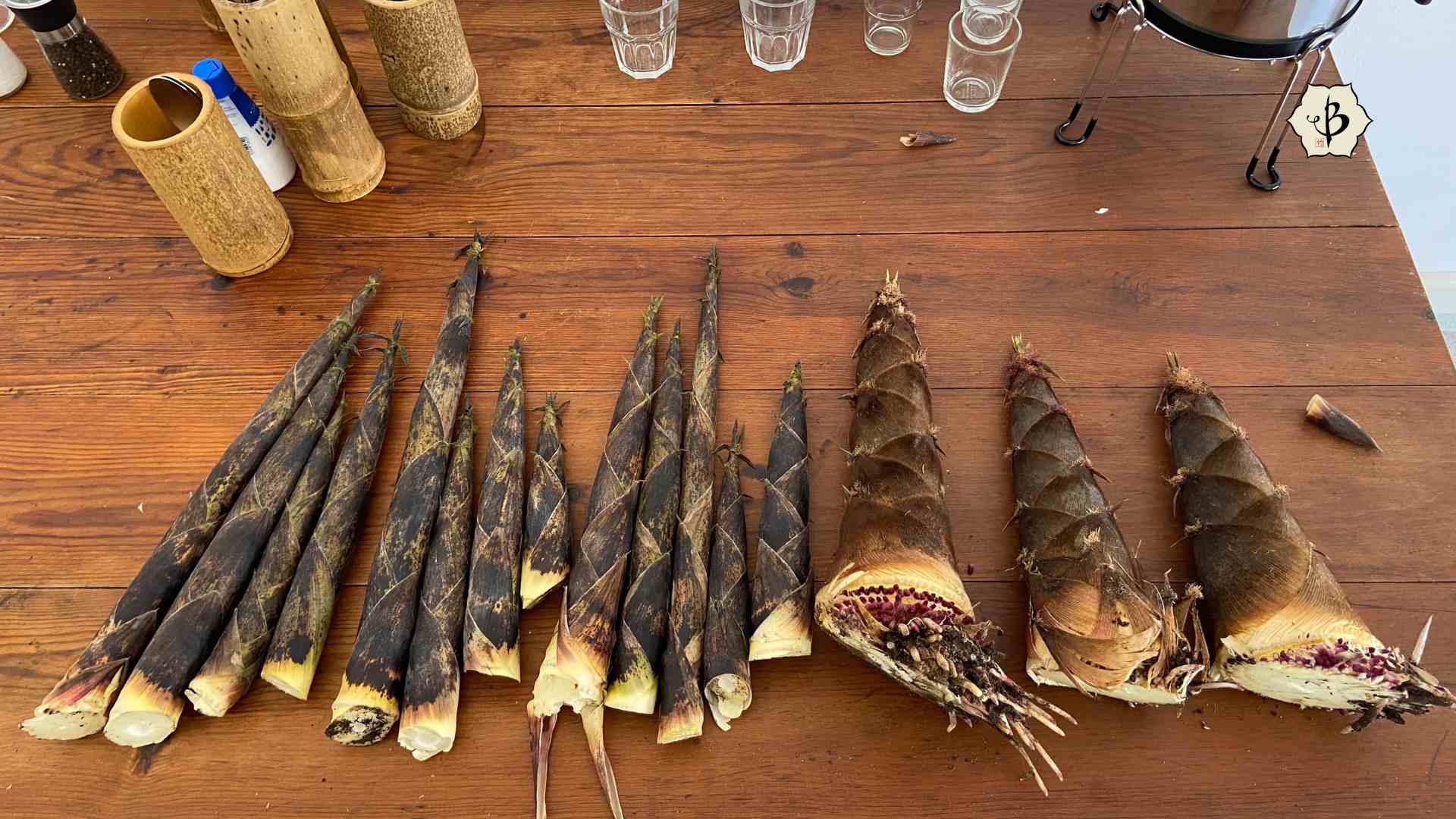
How nutritious are bamboo shoots?
You wouldn’t think of woody bamboo stalks as being particularly high in nutrients. And they’re not, which is why panda bears have to spend almost the entire day eating (and chewing) just to get enough vitamins and minerals. Bamboo, after all, makes up about 99% of their diets.
But as with many freshly sprouted seeds and grains, the young and tender culms are actually packed with nutrition. That’s the stage when the nutrients are readily available and most highly concentrated. And when you think about the growth rate of these giant timber bamboos — some of them shoot up a foot or two a day — it should come as no surprise that those fresh, new sprouts are just loaded with fuel.
Essentially, young bamboo shoots are a great source of protein, minerals, and fiber. They are especially high in potassium. At the same time, they are low in very fat, sugar, and carbohydrates. And by virtue of its growth habit, bamboo does not require any pesticides or fertilizers, unlike most commercial food crops. New research on the subject also suggests that bamboo can improve appetite and digestion, and even treat diseases like cancer.
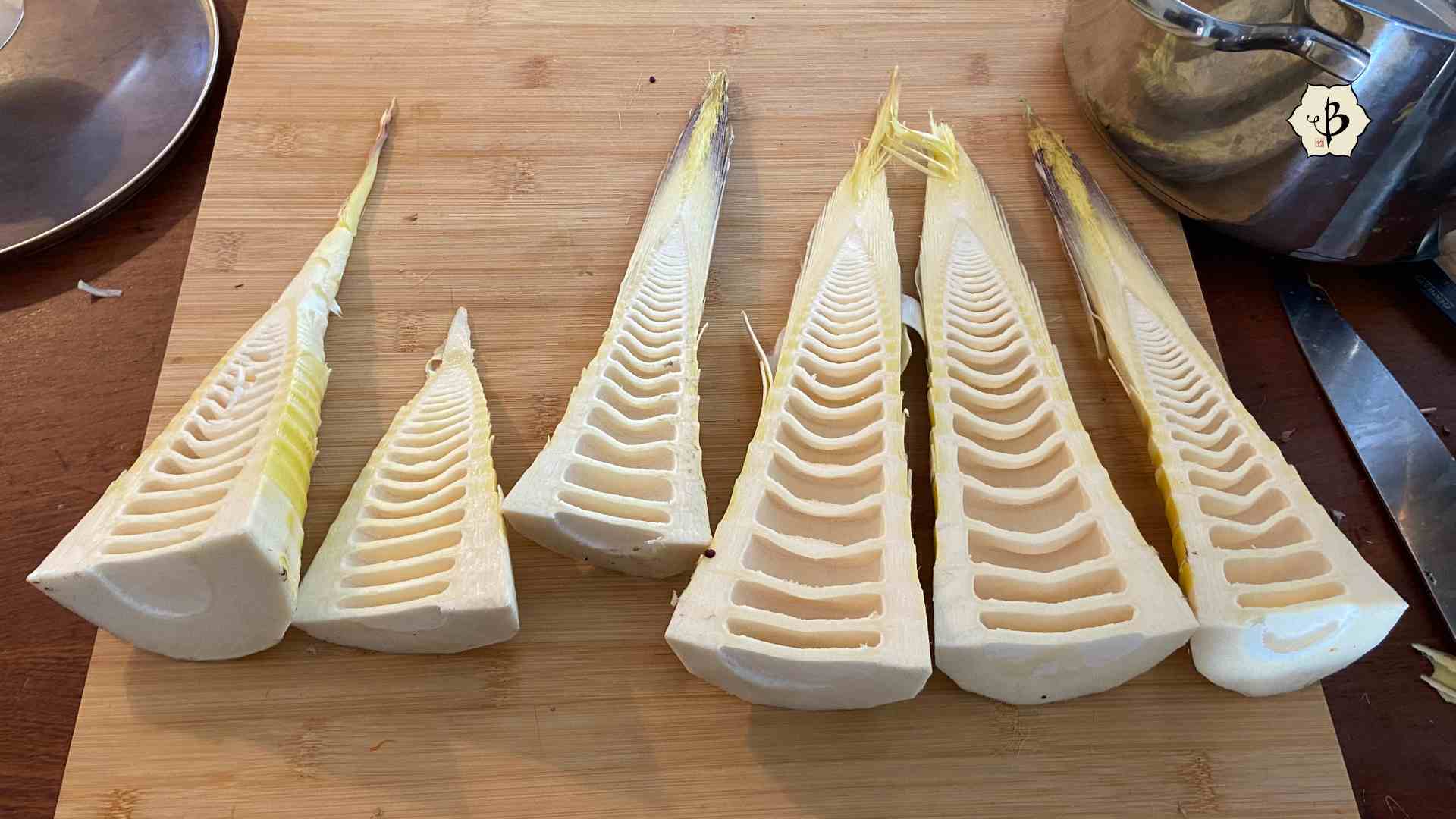
How does it taste?
Today, bamboo shoots remain a very popular component in a wide variety of dishes throughout Southeast Asia and beyond. But we don’t usually cook with bamboo for its exquisite flavor. Instead, we use bamboo to add a little extra texture, as well as some fiber and protein. When it comes to flavor, we let those exotic Asian spices do the talking.
Bamboo makes an excellent addition to just about any kind of soup, curry or mixed vegetable dish. Meals that incorporate bamboo and coconut milk are especially popular in Indonesia and Southeast Asia. Now that’s what I’m talking about!
Fermented bamboo is common in Nepal and northern India. There’s also a tradition of eating fermented bamboo in Kenya and East Africa. If you’re a fan of fermentation, you can check this recipe for Bastenga and Kesei. You might also enjoy this recipe for kimchi and this article on the science of sauerkraut.
The variety of culinary uses for bamboo shoots is virtually unlimited. So grab ahold of some culms and get into it. If you don’t have a good grove in your backyard or a fresh bamboo vendor at your local farmers market, you can still find canned bamboo shoots at most Asian specialty shops or major supermarkets.
We’ve heard that bamboo and spinach also go very well together. After spending some time with a good friend from Peru, I was recently inspired to prepare a large serving of bamboo ceviche. I replaced the seafood with fresh bamboo shoots and marinaded them in lemon juice with red onion, chilis, garlic, and cilantro. It was a big hit. If you have a favorite bamboo recipe you’d like to share, please let us know in the comments section below.
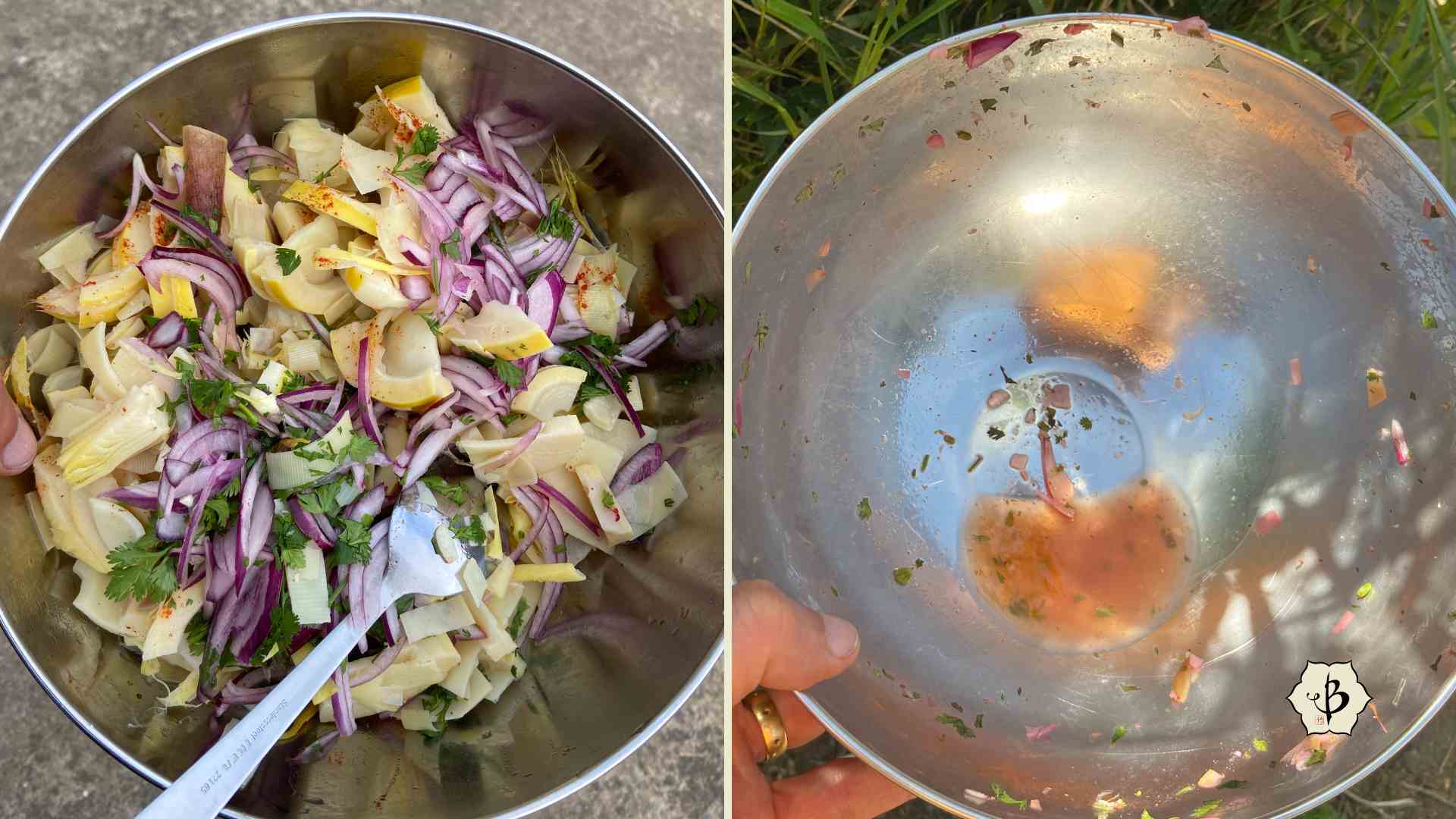
Cooking with bamboo kitchenwares
If you like cooking and eating bamboo, chances are you also enjoy cooking and eating with bamboo kitchen implements. Look online and you can find some very high-quality bamboo cutting boards at Amazon as well as an endless array of bamboo cooking utensils. Ideal for use in the kitchen, wood from bamboo is extremely hard and naturally antimicrobial, making it resistant to germs and easy to keep clean.
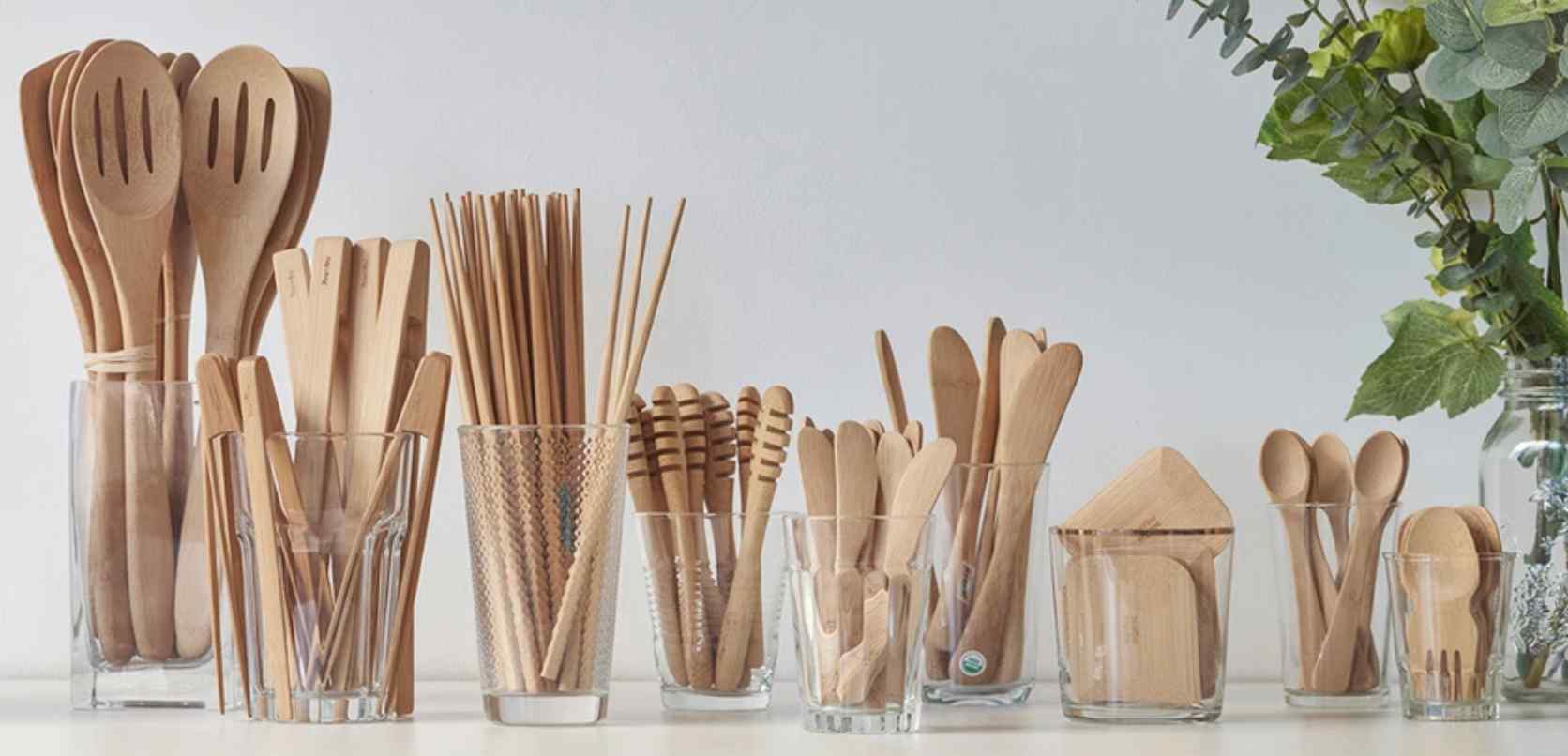
Additional servings
Do you have an insatiable appetite for bamboo knowledge? Then you’ve come to the right place. Take a look at some of these in-depth articles, and prepare to dig in!
- Bamboo as a pioneer species
- Poverty relief with bamboo
- Bamboo and oxygen generation
- How an Asian insect spurred a bamboo boom in Florida



























Do you know of any farmers in Washington state that grow edible bamboo? I’m not in a position to grow my own at the moment.
Also, is it poisonous to eat non-edible bamboo?
I’m afraid I don’t know any farmers in Washington State. Any bamboo shoots can be eaten, but some are just better tasting than others. And most species should be boiled or fermented before eating to make it easier to digest..
There is a guy in Oakville that advertises on OfferUp that sells many variety of bamboo. Some are edible for sure. I bought a half dozen root balls of the timber bamboo that grows well in the northwest and planted them 3 years ago and they are doing fantastic. I could harvest the big shoots this year but I decided to let them get a little bigger, but next year I will harvest some. Very good tasting shoots. I also started growing a couple other types, one is from California on my dad’s farm, I believe it’s Moso. I planted a few root balls about 2 months ago and they’re already throwing out shoots which was a huge surprise since I figured I wouldn’t see growth until next spring.
Sounds like some righteous bamboo! I’m surprised that Moso grows so well there in Nor Cal. It’s generally much better back East. Are you sure it’s not Phyllostachys bambusoides (Japanese timber) or Ph. nigra ‘Henon’ (Giant gray)? Either way, you have a thriving timber bamboo, so maybe just be grateful and don’t question it!